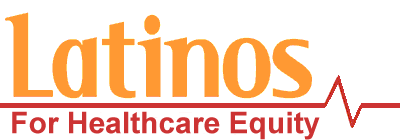« In-Depth Analysis by Team of UMass Amherst Economists Shows Viability of Medicare For All | Main | Has single-payer health care’s time finally come? »
Upstate NYers medical debt mysteriously paid off
By admin | December 10, 2018
For nearly 150 people around the NY Capital Region who’ve been hounded for years by debt collectors, the mail should have recently brought some good news. News that seemed too good to be true.
If it came in a yellow envelope with a return address of Rye, New York from a group called “RIP Medical Debt,” it wasn’t. Too good to be true, that is. Your years-old medical debt has been forgiven. Paid off. No strings attached.
“A lot of people get our letters and think they’re too good to be true and throw them out,” said Daniel Lempert, a spokesman for RIP Medical Debt. “That’s why we try to get the word out.
Thanks to a fundraising campaign by a group out of the Finger Lakes, the medical debt of some 1,284 people around upstate New York totaling $1.5 million has been forgiven. In the Capital Region, 146 people had $298,507 worth of old debt wiped out — all because Judith Jones and Carolyn Kenyon, of Ithaca, got the idea to raise money for a good cause.
The women are members of the Finger Lakes chapter of the Campaign for New York Health, which advocates for universal health coverage through passage of the New York Health Act. The pair were looking to do some good, and maybe make a political statement at the same time. So when they came across RIP Medical Debt, a nonprofit that buys bundled portfolios of medical debt for pennies on the dollar and forgives it, they were intrigued.
“The further we got into it, the more we realized what a serious issue medical debt is,” said Jones, a retired chemist. “When you start to learn how bad the problem is, it makes you want to do more.”
RIP Medical Debt was founded in 2014 by two former debt collection industry executives, Craig Antico and Jerry Ashton. Dissatisfied with the way they saw debtors being treated, the pair teamed up to create a nonprofit that would buy up medical debt incurred by people who are hard-up financially, for the sole purpose of forgiving it.
Working with third-party credit data providers, the nonprofit searches bundled debt portfolios to locate accounts meeting its criteria for financial relief. It then negotiates to buy portfolios at a steep discount — on average, a penny on the dollar — so it can forgive the debt.
The return on investment is what made the group so appealing, Jones said. It took her and Kenyon four months to raise $12,500, which RIP then used to purchase $1.5 million worth of debt.
Prior to these purchases, the medical bills have passed through several collection agencies and months or years of collection pursuit. It’s this type of debt that really damages a person’s credit, impacting their ability to buy or rent a home, buy a vehicle, secure a loan, or even get a job.
“As medical costs rise to unspeakable levels, so does un-payable medical debt,” RIP says on its website. “Medical debt has destroyed the financial stability of large segments of America’s most vulnerable communities: the sick, the elderly, the poor, and veterans. It also particularly targets the middle class, driving many families who are barely getting along into poverty.”
The statistics are sobering.
More than 1 in 3 Americans say they struggle to afford the cost of medical care, with 43 million now owing $75 billion in past-due medical debt. It’s not for lack of health insurance, either. Three out of every four people who end up in medical bankruptcy had insurance.
While many have taken on extra jobs or worked more hours to cover these bills, some are turning to charity for help. One in every three GoFundMe fundraisers, for example, are for medical bills, according to CEO Rob Solomon.
“One thing that really struck me in my research was the medical debt incurred by women who had metastatic breast cancer,” Jones said.
A number of recent studies and surveys have documented the negative financial toll that treatment takes on cancer patients. Several studies, meanwhile, have found this toll is even associated with a higher risk of death.
More than 11 million Americans took on added credit card debt in 2013 to cover medical expenses. The same year, 15 million depleted their savings to pay for medical bills. Another 10 million were unable to pay for basic necessities, including rent, food and utilities, because of medical bills.
“We really just want people to be aware of what a terrible problem medical debt is,” Lempert said. “And we want recipients of these letters to know this debt is finally off their credit report.”
Topics: Uncategorized | No Comments »
Comments are closed.

